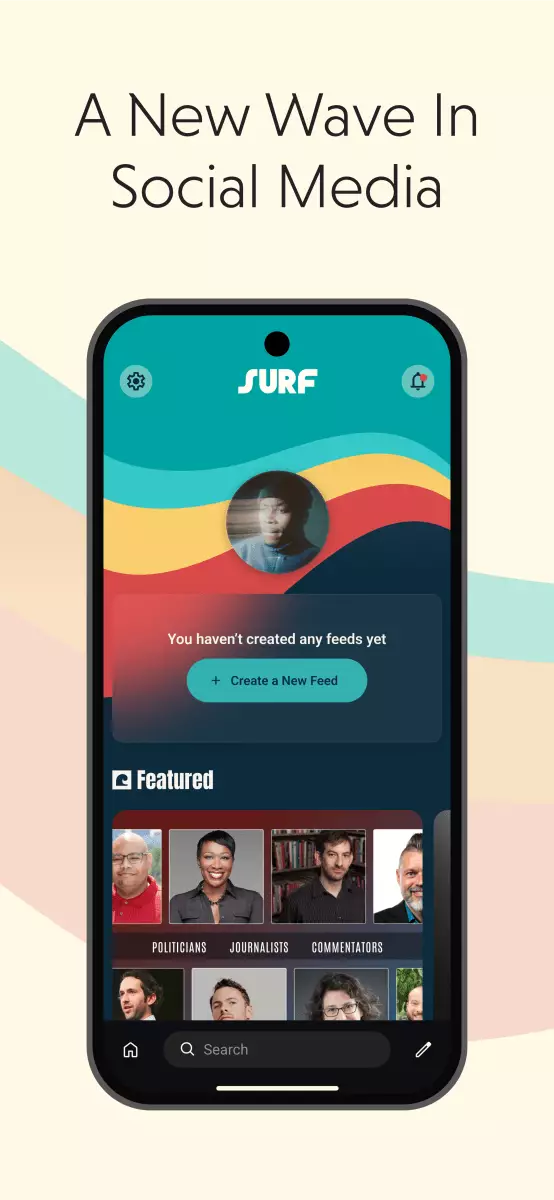The landscape of social media is witnessing a rapid transformation, driven by user demand for more diverse and decentralized content-sharing platforms. With the recent TikTok ban serving as a catalyst, alternative social networking services are seizing the opportunity to enhance user experience through innovative features. This change is not merely cosmetic; it represents a significant shift in how we interact with social media and the kinds of content we consume.
Bluesky, a rising contender in this arena, recently introduced a custom video feed, enabling users to explore trending videos with a fresh interface similar to TikTok’s. Following closely in its footsteps is Flipboard’s Surf, an app designed to navigate the vast potential of decentralized social web environments. Surf’s introduction of its own video feed showcases that smaller platforms can compete with larger, established social networks, breaking away from the proverbial “walled gardens” that have long dominated the social media landscape.
The launch of Surf’s video feed, which initially combines trending video posts from Bluesky with user-generated content tagged with #SkyTok, serves as a valuable case study in how emerging platforms can leverage established networks. The ability to personalize feeds by analyzing user interests and preferences represents a crucial step towards creating tailored social experiences. As Surf gears up to implement individual user timelines into their videos, the platform aims to foster a rich, engaging experience that is more aligned with personal interests than a one-size-fits-all approach prevalent in traditional social media settings.
According to Flipboard CEO Mike McCue, the potential for these custom feeds is tremendous and serves various functions such as video sharing and discussion groups. The emphasis on personalization coupled with the decentralized framework of the app signifies a departure from the predictability of major platforms. By harnessing the power of user-generated content alongside algorithmically tailored feeds, Surf is poised to offer a unique perspective on how social media can operate within decentralized ecosystems.
One significant advantage that Surf brings to the table is its cross-platform functionality. The app integrates feeds from multiple social networks, including Mastodon and YouTube, allowing users to access richer and more varied content streams. This amalgamation not only widens the scope of engagement but also encourages the exploration of diverse viewpoints and styles, a feature starkly absent from singular platforms that curate feeds based primarily on in-house content.
The ability to create bespoke feeds like “BookTok,” which focuses on literature discussions framed in a video format, illustrates how Surf empowers users to curate their content experience actively. Utilizing hashtags such as #BookTok and #BookSky, users can enjoy an eclectic mix of videos, from Bluesky to platforms previously considered unrelated. This cross-paradigm approach fosters a broader conversation around trending topics, transcending the limitations typically imposed by individual apps and introducing a cooperative ethos in content creation.
As content consumption patterns shift and users increasingly seek platforms that offer personalization and flexibility, the viability of decentralized social media applications like Surf and Bluesky becomes evident. The introduction of tailored feeds that draw on the full spectrum of social media serves not only to enhance user engagement but also to highlight a collective yearning for genuine community interactions—elements that are increasingly commodified on larger platforms.
In this rapidly evolving ecosystem, users are positioned not merely as passive consumers but as active participants who shape the content landscape. The continued development of apps like Surf demonstrates a concerted effort to dismantle traditional hierarchies in social media, promoting an inclusive environment where varied voices can coexist.
Looking ahead, the intertwining of decentralized protocols and social networking could lead to fundamentally different user experiences. As the technology matures and more users migrate from the confines of conventional platforms, we may witness a renaissance in how social media fulfills its promise of connecting and engaging individuals across a spectrum of interests, hobbies, and professions. Only time will tell if such platforms can maintain momentum, but the combination of user-centric design and decentralized structures certainly points toward a promising and diverse future.

